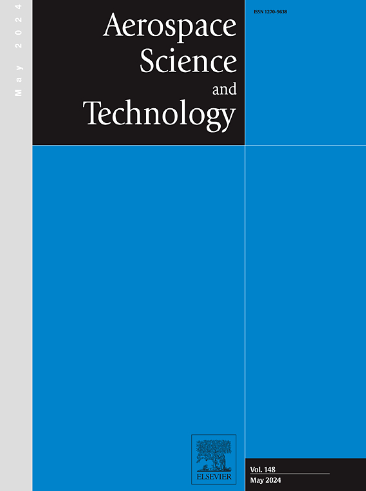多层非线性隔振系统的数据驱动神经模型预测控制器
IF 5.8
1区 工程技术
Q1 ENGINEERING, AEROSPACE
引用次数: 0
摘要
针对具有准零刚度(QZS)特性的多层非线性主动隔振系统(MNVIS),提出了一种基于模型预测控制(MPC)理论的数据驱动控制器训练方法,该方法将预测模型的识别与最优控制律的求解相结合。受神经常微分方程(node)框架的启发,设计子结构物理信息神经网络(PINN),为预测控制器建立被控对象的代理动态模型(SDM)。通过最小化MPC的代价函数来训练神经网络控制器,而不是在线求解最优控制力。最后的结果表明,所识别的SDMs能够准确地捕捉真动态模型的动态特性,所训练的神经网络控制器能够逼近最优控制律。此外,这些控制器能够实现由代价函数指定的卓越隔振性能,并进一步增强了MNVIS的低频隔振能力。本文章由计算机程序翻译,如有差异,请以英文原文为准。
A data-driven neural model predictive controller for multi-layer nonlinear vibration isolation system
For an active multi-layer nonlinear vibration isolation system (MNVIS) with quasi-zero-stiffness (QZS) characteristics, this paper proposes a data-driven method to train the controller based on model predictive control (MPC) theory, which combines the identification of the prediction model with the solution of the optimal control law. Inspired by the framework of neural ordinary differential equations (NODEs), the substructure physics-informed neural network (PINN) is designed to establish the surrogate dynamic model (SDM) of the controlled object for the predictive controller. Instead of solving the optimal control force online, the neural network controllers are trained by minimizing the cost functions of MPC. Final results indicate that the identified SDMs accurately capture the dynamic characteristics of the true dynamic models, and the trained neural network controllers can approximate the optimal control laws. Moreover, these controllers are capable of achieving an outstanding vibration isolation performance specified by the cost functions, and further enhancing the low-frequency vibration isolation of the MNVIS.
求助全文
通过发布文献求助,成功后即可免费获取论文全文。
去求助
来源期刊

Aerospace Science and Technology
工程技术-工程:宇航
CiteScore
10.30
自引率
28.60%
发文量
654
审稿时长
54 days
期刊介绍:
Aerospace Science and Technology publishes articles of outstanding scientific quality. Each article is reviewed by two referees. The journal welcomes papers from a wide range of countries. This journal publishes original papers, review articles and short communications related to all fields of aerospace research, fundamental and applied, potential applications of which are clearly related to:
• The design and the manufacture of aircraft, helicopters, missiles, launchers and satellites
• The control of their environment
• The study of various systems they are involved in, as supports or as targets.
Authors are invited to submit papers on new advances in the following topics to aerospace applications:
• Fluid dynamics
• Energetics and propulsion
• Materials and structures
• Flight mechanics
• Navigation, guidance and control
• Acoustics
• Optics
• Electromagnetism and radar
• Signal and image processing
• Information processing
• Data fusion
• Decision aid
• Human behaviour
• Robotics and intelligent systems
• Complex system engineering.
Etc.
 求助内容:
求助内容: 应助结果提醒方式:
应助结果提醒方式:


